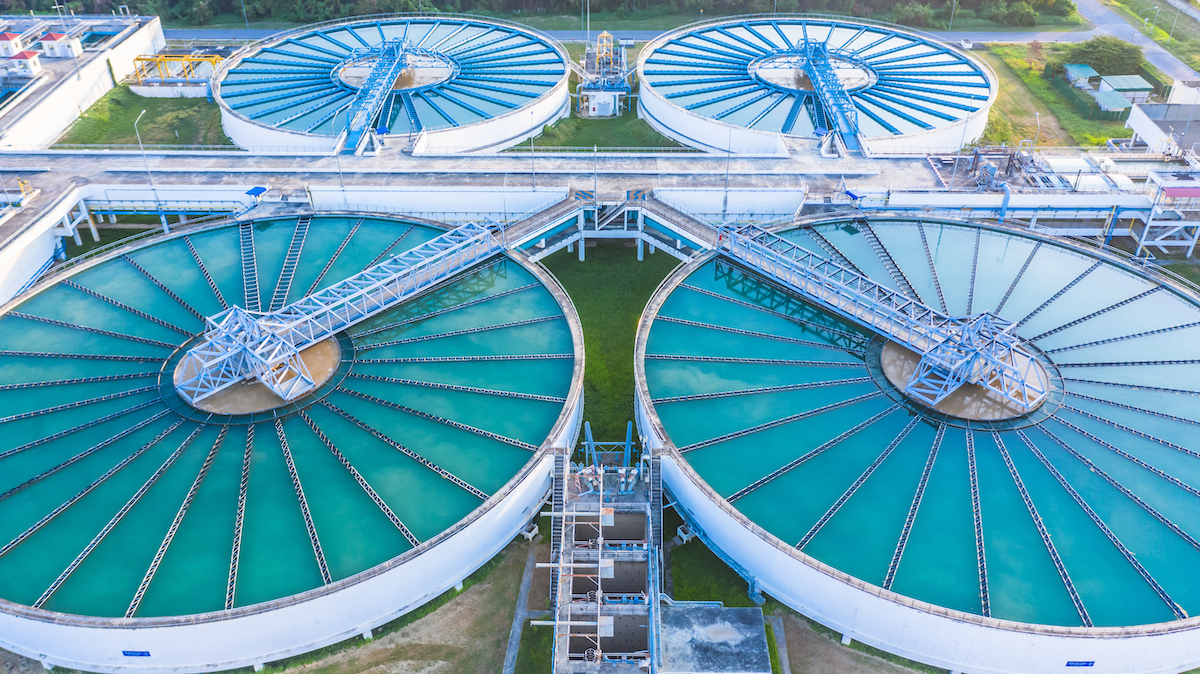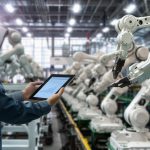Water/Wastewater Utilities leveraging IIoT
Growing scarcity of fresh water resources, growth in urban population, environmental regulations and process inefficiencies are all contributing to a dilemma in the Water/Wastewater industry. Connected machines and devices are reshaping the way utilities are operating, allowing them to make smarter and better informed decisions. It is estimated that the amount of energy wasted as a result of traditional methods of water processing and delivery can be reduced by up to 25% through more dynamic, analytics and real-time system monitoring. With the volatility of energy prices, need to improve sustainability, continuous changes in legislation and increased instances of funding available for energy efficiency initiatives; there is greater opportunities to effectively manage fresh water supply and safely process wastewater.
Role of IoT in Wastewater Utilities
Many utilities have initiatives that are focused on conservation of energy, through the use of motion-sensitive energy efficient lights, limited time use of HVAC systems, solar panel installations (primarily based on electric utility grants), energy efficient devices and system wide collaboration of storage through reservoirs. These actions focus on the Overall Equipment Effectiveness (OEE) of the facility rather than directly affecting energy conservation; energy conservation is a byproduct of these efforts. Incorporating the Industrial Internet of Things (IIoT), in contrast, has and can enable direct energy savings for the smart utility of today.
Disruptive technologies are emerging at an unprecedented rate and it is challenging to know which technologies offer genuine savings versus those that may be rendered obsolete before they achieve their potential. It is challenging for organizations to decipher through the hype and identify those technologies that are applicable to their needs and can deliver an immediate positive return on investment. Within this utility sector, the benefits of the Industrial Internet of Things (IIoT) applications should and are slowly being piloted to create new value in information about elements of business processes that manage existing assets for increased reliability, optimization, supply chains and customer relationships. The IIoT solutions available allows integration of sensing, communications, SCADA and analytics capabilities that has been emerging over recent years. With the increase in pervasive computing devices, lower cost sensors that collect and transmit data, new analytic tools and economic data storage options; a utility can capture more data in real-time at a lower cost and in some cases from previously inaccessible areas that improves field, system and plant performance.
How professionals contribute to leveraging IIoT in wastewater management?
System professionals must design the architecture to deliver on the potential of IIoT ensuring that:
- Operators are empowered– the use of mobile devices, cloud connectivity and data analytics provide operators real time information for better decision making
- Assets are optimized– smart sensors to continue the flow of information and allowing for data to be easily collected from the field and from parameters previously unmeasured
- Smart control aided– enabling tight integration between operational and informational technology for better decision making in the wider enterprise
- Cybersecurity focused – more connectivity demands an increased awareness and posture through a OT Cybersecurity solution in addition to the available IT security deployment
Benefits of IIoT in wastewater management:
To enable energy efficiency at utilities, IIoT should be implemented, so that engineering analyses can occur on the additional real-time data from remote systems, motors and other larger energy consuming equipment, which makes analysis quick, straightforward, and more accurate. IIoT strengthens the capabilities for real-time alerts, ability to predict energy demand, usage patterns, and ways to optimize energy consumption when integrated with industrial control systems data sets. Energy efficiency is becoming an issue many utility owners are focusing on; it is estimated that a majority of pump systems are oversized, many by more than 20%. With electricity costs accounting for 40% of the total cost of ownership (TCO) of a pump, managing the energy of this asset is key. The solution for these issues can be found in Intelligent Pumping, which incorporates IIoT. This approaches result in energy savings, increased equipment lifetime, and maintenance cost reductions by providing higher quality and precise data to operate.
One major source of electricity usage in water/wastewater facilities involves the pumping and aeration equipment systems. Implementing a data-driven framework for improving the performance of water/wastewater pumping systems has been realized using data science techniques, modelling, leveraging IIoT technology and computational intelligence. A pump systems’ performance is measured in energy consumption and pumped water/wastewater flowrate. Many pumps typically operate below their best efficiency point (BEP), resulting in excess energy being transmitted into vibration, heat and noise – all which increases maintenance and energy costs. When equipment is not optimized for best efficiency, pump systems consume maintenance budgets by decreasing the mean time between repairs. Organizations must focus on total life cycle cost (LCC) instead of initial purchase price.
With poorly designed wireless communication technologies for wide area field networks, lapses in security and reliability; many existing consumer options for wireless connectivity have failed to meet the needs of industrial applications. To address the security and reliability concerns, IEEE published a new standard for private, licensed wireless field area networks known as 802.16s
How IIoT is changing the waste water Industry
Combining IIoT, Automation and Energy Management initiatives, we can provide the water utility industry a historic future. With IIoT sensors now offering a substantially cheaper price point with new battery powered networking solutions; the price barrier has been significantly reduced. Cutting-edge, IIoT water solutions are gaining traction with private and municipal water utilities, which see data and analytics as critical tools for overcoming the issue of aging water infrastructure. The ability to interconnect things, services and people via the Internet improves data analysis, increases productivity, enhances reliability, saves energy and costs, and generates new revenue opportunities through innovative business models. The industrial internet of things and the cloud services that support this ecosystem also offer the benefit of bringing world-class analytics within reach of smaller production facilities. Conversely, efficiencies driven by increased IIoT based remote monitoring and control also expose water systems to cyberattacks or hacks, which could affect delivery. As water and wastewater operations leverage new technologies, there must be an increased focus on using secure and reliable wireless networking technology, anomaly detection and re-designed system architecture. Learn more about Smart Water Management using IoT Technologies
IIoT is improving water management through:
Water leakage detection
Increases energy efficiency by correlating energy patterns to production and process variables. Analytics to detect water loss and theft and pressure management
More efficient systemic water management
These IIoT water sensors track water quality, temperature, pressure, consumption, and more. These devices typically communicate directly with a water utility company to analyze the data and share with the consumer in an easy-to-understand format. Users can then understand how their consumption compares to city averages, previous months, and more.
Water quality and safety monitoring
Transparency on wholesale/retail consumption. Respond to fluctuations in energy cost or new compliance requirements. Model performance in support of energy budgeting and contract negotiations.
Prescriptive maintenance on infrastructure
Predictive and preventive maintenance and anomaly detection through IIoT data platform.
Industry consolidation
Industry consolidation as technology firms build utility track records and larger industrials find synergies within their product portfolios.
Incentives
Incentives for manufacturers to develop comprehensive “smart pumping systems”
Originally this article was published here.
This article was written by A. Gosine. He is an Experienced Global Program Director with a demonstrated history of working in the industrial construction management industry. Skilled in Process Control Systems, Project Management, Cost Management, Industrial Control Systems Design, Advanced Process Control, and Operations in various power and water utilities.
Sorry, the comment form is closed at this time.




Pingback: Top 7 Ways IIoT is Improving Water Management for Utilities - RUMBLE